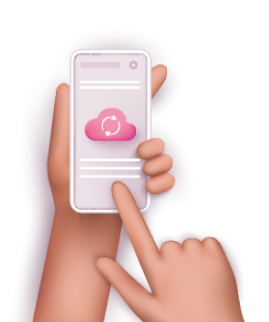Today’s telcos are failing at segmentation. Instead of slicing and dicing their data to form meaningful user segments, they are relying on a one-size-fits-all approach that leaves value on the table.
Here’s how Communication Service Providers (CSPs) can turn those tables and achieve true audience segmentation, and critically – why it matters.
CSPs know very little about their subscribers… and it’s hurting them
So, what do we mean by customer segmentation? Customer segmentation is the process of tagging customers based on predefined parameters and separating them into similar groups of users. Before you can make this happen, you need the right data. Once you’ve collected the right data, you’re in a strong place to analyze and segment to find valuable groups.
In the case of CSPs, customer segmentation can be used to create personalized marketing efforts, as well as to improve the quality of service and subscriber experience.
You might ask, why do these segments matter? Understanding your subscribers and their needs is key to their success and your own. For example, a gamer household requires an internet experience that doesn’t lag and an especially high internet speed. Knowing this, the CSP could proactively offer a larger data package or a WiFi extender that will improve their gaming experience.
Another example could be a subscriber who’s experiencing a lot of interruptions in their service. They are likely to be unhappy with the service and are therefore more likely to churn. Being able to segment this user into an “at risk” category is extremely valuable for the customer service agents and can help the business to retain such customers for longer periods. This household needs a gentle touch and an attempt to restore trust and good service, in direct contrast to our first example, who would benefit from a larger data package. Calling this home and offering them an upsell opportunity is not likely to be well-received, and may even cost you the subscriber altogether.
The data you need to make these decisions, data on subscriber activity, application and device identification, and the quality of each session is all readily available with the right technology, such as Veego’s AI-based data analytics platform. And yet, most CSPs are not utilizing any kind of analytics platform at all. This means they can’t achieve anywhere near the potential that exists from segmentation.
They might be able to segment by the package that subscribers have bought, where they live, or how many times they have called in the last 12 months – but it stops there. They don’t have the contextual data necessary to garner insights into their subscribers’ actual internet experience – their Quality of Experience (QoE).
The segmentation domains that move the needle for CSPs
With the right data to hand, and a QoE score that reflects how subscribers actually feel about their internet experience, you can segment customers and monitor their user experience on an ongoing basis.
Let’s look at four key areas that can make a real difference to both subscriber quality of experience, and business growth. These are, Value, Lifecycle stage, Behavior and Experience:
- Value: How valuable is this household? Are they big spenders, do they tend to say yes to upsell and cross-sell opportunities, and what is their LTV overall? Understanding customers past and predicted expenditure can be vital.
- Lifecycle stage: Where are these subscribers in terms of their lifecycle with you? Are they brand-new subscribers, or long-term brand champions? Your behavior during the first 90 days for example should be different than for a loyal long-term advocate.
- Behavior: How do these subscribers use the web? Segmenting via usage means looking at real-time sessions, and understanding whether users are streaming, gaming, uploading large files, working from home, reliant on smart home devices, and more.
- Experience: This involves proactively tracking the parameters which will indicate quality of experience. This is a combination of QoS parameters such as bandwidth, jitter, uptime, packet loss and latency, alongside recurring malfunctions and how they impact subscriber experience.
Segmentation allows for personalization
By creating these segments, CSPs are best-placed to use personalization to delight users and boost their own business efforts. According to McKinsey Research, a personalized customer experience is key to retain customers and increase revenue, and 71% of consumers expect companies to deliver. Fast-growing companies drive 40% more revenue from personalization than their peers.
Think now about how achieving these kinds of segments in your subscriber base, and gaining insight into which WiFi metrics are of importance to which homes can offer personalization opportunities.
Take a household that performs a lot of video conferencing, for example. It relies on a stable internet connection without any delays. If this household shows a low QoE score during Zoom sessions or a lot of packet loss, you can offer the ability to prioritize these Zoom sessions over any other consumed apps within the same household.
CSPs can also cross-reference information from the different segmentation categories above to add even greater value. A new subscriber would naturally benefit from extra-attention during the all-important initial 90-days after they onboard. This is how you can benefit from the lifecycle segment. However, if you also know what their real-time experience is like, you’re better placed to help. If everything is running smoothly, then a check-in call might be seen as pestering. However, if you can call and say “Hey, we’re happy to have you with us, we’ve noticed you’re having some trouble with performance on your Smart TV, here’s how we can help”, that’s a powerful first impression.
CSPs: If business value is the question, segmentation is the answer
By gathering the right data, CSPs are well-placed to segment their users by intelligent groupings that help with smart and impactful decision making. The success of this strategy relies on how well you can manipulate the data in a way that gives you the most flexibility and visibility.
Ultimately, with the right data in your arsenal, you can shine a spotlight on the true nature of each internet session. By understanding each home, you can better increase subscriber satisfaction with your company, make inroads in reducing churn, and even open up new revenue generators across your install-base.





